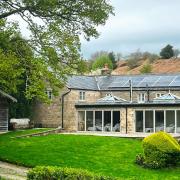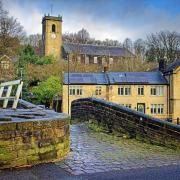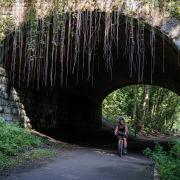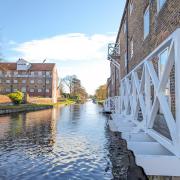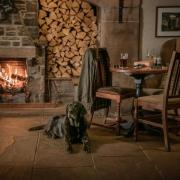Nowadays, we think of Yorkshire’s resorts as simply holidays spots.
In the past, however, they were rather more select places. Bridlington, Whitby and above all, Scarborough, were host to a very select bunch - from
royalty and dukes to landed gentry, millionaire industrialists and fashionable society. In a new book, Dr George Sheeran explores buildings that defined the resorts

Cliff House, Marske-by-the-Sea
Marske-by-the-Sea never quite developed into a resort, but it did become the location of second homes such as Cliff House. Built around 1845 for Joseph Pease, one of an industrial dynasty of County Durham, Cliff House is designed in the sort of Elizabethan style associated with the English gentleman - but as a summer place for an industrialist.

The Towers, Scarborough
The Towers at Scarborough clearly echoes the architecture of Scarborough Castle which stands above this house built in 1866. The architectural press were not keen, one commentator calling it 'a feather-bed fortalice', yet its rugged outline has withstood the test of time. Its builder, Thomas Jarvis, a Rotherham-born brewer, was a patron of the painter Atkinson Grimshaw, who for a time lived in the house next door.

North Cliff, Filey
Elinor [sic] Clark of Filey was heiress to fortunes made in property and the law, and was probably the richest woman in Filey by the late nineteenth century. In the 1890s she embarked on building North Cliff a mansion designed in a traditional manor house style with a tower overlooking the sea. Walter H. Brierley of York was the architect whose work caught the eye of the German cultural attaché Herman Muthesius. North Cliff appeared in his Das englische Hause published in 1904.

The Crescent, Scarborough
Not everyone desired a villa by the sea - some rather grand terraces were built also, such as the Crescent at Scarborough. While the scheme was proposed in 1832, the Crescent was not completed until the 1850s. The architect was probably R. S. Sharp of York whose design is reminiscent of crescents at Bath or Buxton, lending a touch of cool hauteur to the town.

Royal Crescent, Whitby
In the 1840s, George Hudson, the 'Railway King', had grand ideas to develop Whitby's West Cliff as a new suburb which would have incorporated a fine crescent of houses. Unfortunately, Hudson's dealings were to go bottom up after 1849. Work halted. The Royal Crescent was never completed and remains half-finished.

Esplanade, Scarborough
The 1840s also saw the development of Scarborough's South Cliff which resulted in the construction of a number of imposing terraces as the Esplanade demonstrates. Like the above, these houses contained accommodation for servants and seem to have been occupied by wealthy families or as high-end lodging houses that could be rented by a family and their servants for a month or more spent by the sea.

The Zetland Hotel, Saltburn
Saltburn is a completely new resort of the 1860s. As at other resorts, fashionable society was courted, and to ensure sufficient accommodation the Zetland Hotel was opened in 1863. It was designed in a striking style that hovers between Italianate and French. It stands in the centre of the new resort, connected directly to the station for the convenience of its guests.

Alexandra Hotel, Bridlington
Such luxury hotels became a feature of several Yorkshire resorts from the mid-nineteenth century and after. At Bridlington in 1863 the Bridlington Quay Hotel Company had commissioned Scarborough-based architect W. B. Stewart to design a new hotel to the north of the town. Stewart produced a full-blooded French Second Empire design that has, sadly, since been demolished.

The Grand Hotel, Scarborough
Cuthbert Brodrick's Grand Hotel, Scarborough, opened in 1867. Brodrick, designer of Leeds Town Hall and its Corn Exchange, produced a Parisian-looking design of great splendour, containing 350 rooms, the largest hotel in England at the time. Its roofline is a wonder being decorated with a remarkable array of sculpture including female figures (Caryatids) and male ones (Atlantes) as if supporting the roof.

The White House, Filey
If elite society began to drift away from the Yorkshire coast by the end of the nineteenth century, it still held a pull for some. The White House at Primrose Valley, Filey, was probably built for Robert A. Breare a newspaper magnate of Harrogate. After Butlin's Filey camp opened in the same area in the late 1940s it became the home of Butlin himself. It is the outstanding modern movement villa on the Yorkshire coast, and probably the last such holiday home to be built on this scale.

The Author
Dr George Sheeran has taught architectural and urban history at the University of Bradford where he is Honorary Post-Doctoral Fellow. He has written extensively about the county's architecture and in his latest book focuses on Yorkshire's resorts - The Golden Age of Yorkshire Resorts 1800-1914, Amberley Publishing 2023






